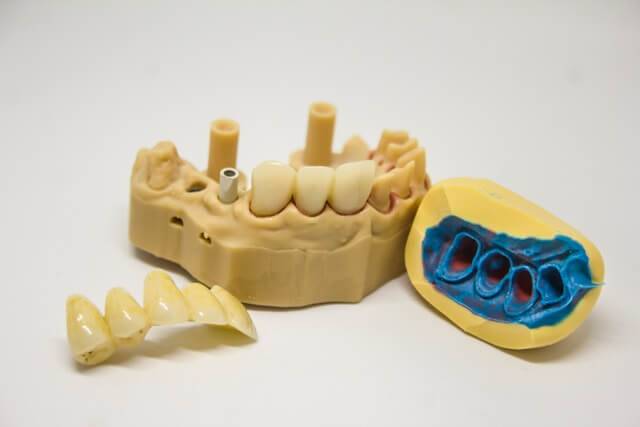The tooth is quite brittle in nature and as such susceptible to fracture. Cracked tooth or tooth fracture is a serious cause of worry for many individuals, and its treatment depends on the type of fracture. A fracture could be limited to the enamel or involve inner components – dentin and pulp chamber.
What is a Cracked Tooth?
A cracked tooth is a break, chipping off or crack on a tooth that occurs due to trauma such as a fall, a blow to the face or motor vehicle accident.
Types of Cracked Tooth
Different types tooth fracture include the following:
- Enamel fracture: the crack or fracture is limited to the enamel. It could be horizontal, oblique, vertical.
- Enamel-dentin fracture: this type of fracture extends from the enamel to the dentin. On some occasions, the fracture may involve the pulp.
- Root fracture: Occurs below the gum line. It may or may not involve the pulp.
Other forms:
- Craze lines: visible fracture lines that involve only the enamel.
- Cuspal fracture: fracture of the tooth cusp. Can be limited only to the enamel. It can also involve the enamel and the dentin.
- Split tooth: here, the tooth is split into two separate segments.
Causes of Cracked Tooth
There are different causes of tooth fracture. Identifying the cause of a cracked tooth is important in its treatment. Here are some common causes.
Chewing/Biting on Hard Food Substances or Objects
Hard food substances like nuts, and bones have the tendency to crack the enamel. Cracking hard substances such as ice or inadvertently biting on a grain of sand while eating might crack your tooth.
In fact, a good number of people who visit the dental clinic for treatment cracked their teeth when they accidentally chewed a grain of sand or small stone in their food. This is quite common with eating beans, especially in africa. Therefore, it is important to wash our food properly and ensure it is free of sand during preparation.
Oral and Maxillofacial Trauma
A lot of cracked teeth result from dental trauma. Some examples include:
Fall: this is common in children. A lot of children with broken teeth or have received treatment as a result of a cracked tooth sustained the fracture from a fall.
Blow to the face: this can be seen in contact sports. Individuals involved in contact sports like boxing should wear a mouth guard to protect their teeth.
Motor vehicle accidents
Road traffic accidents result in a number of oral and maxillofacial injuries including teeth fracture. A cracked tooth due to an accident is usually serious and requires treatment as soon as possible.
Bruxism
This is the habit of grinding or clenching of the teeth. Bruxism can cause tooth wear problems as well as cracking of the tooth. Although grinding of the teeth can occur during the day, it is more common during sleep.
Bruxism can be a serious issue, especially when the complications – jaw pain, shocking sensations, toothache, broken or cracked tooth/teeth – begin to manifest.
There is no even distribution of occlusal force in individuals that have the habit of grinding their teeth. This causes too much stress on the teeth that bear more load during grinding or clenching, and might consequently result in tooth fracture amongst other problems.
If you have the habit of grinding your teeth, it is advisable you visit your dentist, who will carry out a thorough examination before drawing up a befitting treatment plan to help you break the habit.
Exposing the Tooth to Extremes of Temperatures
Abrupt changes in temperature can cause cracking of the teeth. For example, eating hot food and taking something cold immediately afterwards causes rapid expansion and contraction of the enamel resulting in fracture lines on the enamel.
It is not advisable to eat hot and cold meals at the same time because it has some negative impact on the teeth.
Carious Tooth
Tooth decay compromises the integrity of the tooth structure. When much of the tooth substance is lost due to tooth decay, the tooth will not be able to withstand the force of mastication, and overtime may begin to break in pieces.
This is one of the reasons why it is essential to treat tooth decay as soon as possible as the delay could lead to losing the tooth due to an unrestorable fracture.
Tooth that Has Undergone Endodontic Treatment without Crown
After a root canal treatment, the structural integrity of the tooth is weakened, and may result in cracked tooth or fracture.
A crown is usually a tooth coloured prosthesis that is placed on a prepared tooth for the purpose of restoring aesthetics, function and structural integrity of that tooth.
Failure to crown a tooth after an endodontic treatment could lead to tooth fracture.
During a Dental Procedure
Iatrogenic damage to teeth can occur during dental treatment. For example, a tooth can fracture during root canal treatment. An adjacent tooth may also be cracked during a difficult tooth extraction.
Dentists observe necessary precautions to mitigate against iatrogenic damage to teeth, however, these challenges do occur once in a while during dental treatments.
Symptoms of Cracked Tooth
There are certain telltale signs that may suggest you have tooth fracture and may require treatment by your dentist. Let’s take a look at some of these signs.
A feeling of Roughness on Your Tooth
If your enamel is chipped, your tongue will often go to the cracked area because of its roughness. This causes a lot of inconvenience, and sometimes may injure the tongue.
Sometimes, you may not be able to tell when the crack on your tooth occurred, but the feeling of roughness by the tongue is actually what alerts you that something is not right and prompts you to visit your dentist.
Tooth Sensitivity
You may feel a shocking sensation from your tooth after suffering a cracked tooth. The shocking sensation or sensitivity could be triggered by cold air, hot or cold food substances, citrus fruits, and acidic drinks.
If you are suffering from tooth sensitivity due to tooth fracture, you can use a desensitising tooth to help with the shocking sensation. However, you will need to visit your dentist for a proper treatment even after using a home remedy.
Pain
Pain from a cracked tooth could be persistent or recurrent depending on the extent of the fracture. For some people, they feel pain on biting down while others feel pain on release after biting down.
Pain from a cracked tooth could be as a result of exposure of the pulp when the fracture occurred. It can also come from the periodontal tissues that have become inflamed because of the trauma to the tooth.
Treatment of Cracked Tooth
The treatment for a cracked tooth depends on the type and extent of fracture. Here are the different treatment options for a cracked tooth.
Restoring the Tooth with a Filling
Filling a cracked tooth is a treatment option, especially if the fracture is limited to the enamel or extends to the dentin without involving the pulp.
The filling materials such as composite resin are usually used to restore a cracked tooth.
Root Canal Treatment
Root canal treatment is an option where there is pupal exposure as a result of cracked tooth.
If there is no treatment for the exposed pulp, it can lead to ingression of bacteria into the pulp tissue causing severe pain, and in some cases, swollen gums. The only way to save the tooth will be to do root canal therapy.
Placing a Crown
A crown helps to restore the form, function, and also strengthen the tooth against the force of chewing. It can be placed on a cracked tooth and is also used after a root canal treatment.
Failure to crown a tooth after a root canal therapy is a risk factor for fracture.
Tooth Extraction
Tooth removal is an option where the tooth is not restorable, root canal therapy is not possible or the individual cannot afford the cost of treatment after suffering a cracked tooth. For example, if there is root fracture or abscess occurring as a complication of tooth fracture, it can lead to the extraction of the tooth.
Leave Alone
Not all types of cracked teeth require treatment. The dentist may not be in a hurry to treat some kinds of fractures. For instance, if you have a craze line fracture that is asymptomatic, your dentist may decide to monitor the tooth instead of carrying out treatment.
Conclusion
If you have a cracked tooth, it is important you visit a dentist for treatment. Sometimes ignoring a cracked tooth may lead to consequences you didn’t bargain for. Therefore , the right thing to do is to see a dentist if you or your family member has a fractured tooth.









